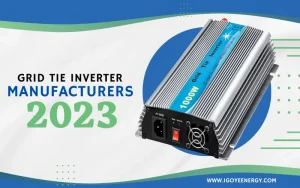AC coupling plays a pivotal role in modern electrical systems by ensuring compatibility between various components, improving efficiency, and enhancing the overall system performance. It refers to the method of transferring alternating current (AC) between parts of a circuit without passing the direct current (DC) components. This process is essential in applications ranging from audio equipment to complex power systems, including the integration of renewable energy sources.
Understanding AC Coupling
The Basics
AC coupling involves using capacitors or inductors to block DC signals while allowing AC signals to pass from one section of a circuit to another. This method is crucial for preventing DC bias from one part of a circuit affecting the subsequent parts, ensuring that the system operates within its intended specifications.
Importance in Renewable Energy Systems
In renewable energy systems, AC coupling is instrumental in integrating solar panels, batteries, and the grid. It allows for the efficient conversion of DC power generated by solar panels into AC power, which is compatible with the grid and can be used directly by homes and businesses.
Key Advantages of AC Coupling
Compatibility
AC coupling ensures that devices and systems can work together seamlessly, regardless of their inherent electrical characteristics. This compatibility is crucial for the integration of renewable energy sources with existing power grids.
Efficiency and Performance
By filtering out DC components, AC coupling can significantly improve the efficiency and performance of electrical systems. It prevents the saturation of transformers and reduces the risk of overheating, thereby extending the lifespan of the components.
Flexibility in System Design
AC coupling offers designers more flexibility in creating systems that require the integration of AC and DC components. This flexibility is essential for developing innovative solutions in power generation, distribution, and consumption.
AC Coupled Inverter
An AC coupled inverter is a critical component in renewable energy systems, converting DC power from solar panels or batteries into AC power. This conversion is essential for supplying electricity to the grid or directly to consumers.

Specifications and Performance Metrics
- Power Capacity: AC coupled inverters typically range from 3 kW to 10 kW for residential applications, with commercial systems exceeding 100 kW.
- Efficiency: Modern inverters achieve efficiencies of over 95%, ensuring minimal energy loss during conversion.
- Lifespan: High-quality inverters have a lifespan of 10 to 15 years, depending on the operating conditions and maintenance.
- Cost: The price of AC coupled inverters varies widely, from $1,000 for basic models to over $10,000 for advanced systems with higher capacities and features.
Conclusion
AC coupling is an essential technique in electrical engineering, offering numerous benefits in terms of compatibility, efficiency, performance, and design flexibility. With the increasing integration of renewable energy sources into our power systems, the role of AC coupling, especially through devices like AC coupled inverters, becomes even more critical. By understanding and leveraging this technology, we can ensure the smooth operation and optimal performance of our electrical systems, paving the way for a more sustainable and efficient energy future.